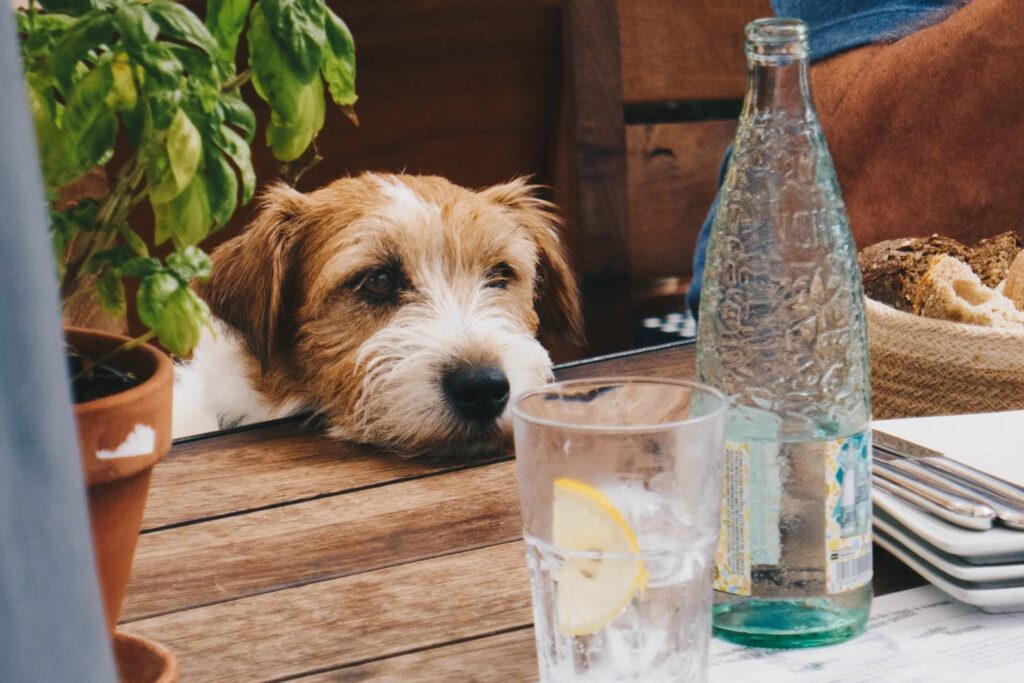Water that you would drink naturally without concern of contamination is the ideal drinking water for pets. For example, if the installed tap water is safe for you, it is also safe for your pet. Likewise, if the tap water is not clean and wholesome but offers health dangers to you, do not give it to your cat or dog.
Types of water
Did you know that the type of water you use can affect your water’s acidity or ph levels? Purified water becomes more acidic when natural minerals and other filtration processes are removed, but spring water is often higher on the natural pH scale.

Pets suffering from the renal disease may have increased acidity, making their stomach acid levels uncomfortable.
Tap water
Water from your local municipality is the most popular and cost-effective option for pets. Tap water is typically from a nearby river, reservoir, or lake.
Unfortunately, sourcing from local streams exposes you to the risk of groundwater contamination from bacterial outbreaks, chemical spills and leaching, and even algae or red tide infestations.
Water production is extensively monitored by city and county governments. However, communities across the country are struggling with clean water concerns, and the situation is becoming more challenging by the day.
Using a filter on your tap or a filtered pitcher, depending on how much-filtered tap water you want each day, is an easy solution to reduce the dangers. Compare filters carefully; some remove lead and germs in addition to chlorine, while others do not.
Distilled water
Because of the distillation process, this is the cleanest water chemically and should be devoid of pathogens. It is also likely to be the most tasteless or flat pets may experience. Some claim it has a“plastic taste” because it is typically delivered in plastic bottles. Purists have referred to distilled water as“dead” water.
They believe that the mineral elements extracted during distillation provide water its life-giving qualities. They believe this has no nutritional value. Other sources, however, claim that the minerals contained naturally in water are not absorbable and thus cannot be efficiently utilized by the body.
Springwater
This is due to artesian wells deep beneath the earth’s surface, which self-filter through several layers of stone, limestone, and other natural materials. It is clean because it essentially bubbles up to the surface. It, like tap water, risks the potential of groundwater pollution, which companies are required to monitor regularly.
However, there have been numerous FDA recalls in spring waters. Springwater has a higher pH than purified water.
Premium waters
Many believe that the higher the cost of water, the better it must be, which appears to be accurate. Several consumer agencies’ testing has repeatedly revealed this is not the case. In reality, when it comes to pets and premium waters, you should be cautious of additives that may be completely safe for human use but may endanger your pet’s health.
Purified waters
Deionization, reverse osmosis, or distillation are popular methods.
Reverse osmosis systems (RO) are an amazing sustainable system for our planet because you are essentially capturing, purifying, and recycling the same water in your house.
Many individuals like how it makes you more individually responsible for your water. The systems are initially expensive, but they pay for themselves. We’ve heard that some pets dislike the feel or taste of this water.
Mineral water
Mineral waters are discovered and produced the same way as spring waters, except that mineral water contains a high concentration of rare minerals.
These typically contain natural properties such as salts, sulfur, gases, and minerals such as calcium, zinc, magnesium, and iron. Dogs should not be given mineral water because their tolerance for chemicals can be quite low.
Reasons why pets require healthy water
Water is essential to the well-being of all living things because it accounts for 55-75 percent of all animals’ body mass. Pets, like humans, require water to cool off.
These animals emit water vapor by sweating and panting via their paw pads, which cause their bodies to cool down. Water helps lubricate joints and muscles by filling the smallest hollows inside your pet’s body and cushioning the areas between body cells.
Water also provides a favorable environment for enzymes to break down food and convert it into usable energy for survival. Water aids in the detoxification and purification of animal bodies.
As a result, water serves as the universal solvent because it is an incredibly stable material capable of transporting different elements in a solution or suspension without affecting its quality.
Other things to think about when it comes to your pet’s water
The type of bowl or delivery method can significantly impact your pet’s taste and ability to drink more. Certain ceramics (mostly made in China) have been discovered to leach toxic chemicals over time.
PBAs can be used in the same way as plastics can. A shatter-proof glass, porcelain (manufactured in the USA), or even Correll tableware seems to perform well and hold up to various small pet usage. Stainless steel is another popular option because it is safe and easy to clean.
The design and size of the bowl can affect each of your pets differently. Take note of how they drink – how they use their tongue, how they hold their head, and how they swallow. Each pet is unique. Some people will need to use the sides of the bowl to assist them in holding and swallowing.
Therefore, a no-tip bowl on a non-slip mat may be useful. Others don’t want their whiskers to come into contact with anything!
Consider getting a bigger bowl for these pets. Senior pets, pets recovering from injuries or surgery, and crippled pets may require their water dishes to be raised to make swallowing easier. How high is it? That is all experimental — but be careful not to choke them, and thoroughly watch any adjustments you make.
Water fountains supply constantly circulating water, which many pets find appealing. One thing to remember with these devices: although they come with a charcoal filter pack to help keep the water clean, examine the bowl every day to see if it’s “slim” to the touch.
These devices must be kept clean to prevent bacteria from growing inside the pump and fountain mechanisms. Change the filter pack as well! Furthermore, leaching is still an issue because these fountains are frequently made of plastic or ceramic.
What is the best option for my pet?
What matters most is that your pet drinks the healthiest water they enjoy and that you can afford it. We can’t emphasize this enough: they must enjoy what they’re drinking.
We all believe that the quality of food we give our pets reduces direct medical care expenditures and increases life expectancy.
Not everyone recognizes how much this applies to water, but it also applies to the amount of water they choose to drink.
Because all animals have free will, one of the most important factors to consider is the type of water your pet will drink. The adage couldn’t be more accurate here. “You can lead a horse (or a cat or dog) to water, but you can’t force them to drink.”

Jay
Jay is a health and wellness enthusiast with expertise in water quality and nutrition. As a knowledgeable advocate for holistic well-being, Jay successfully manages Type 2 Diabetes through informed lifestyle choices. Committed to sharing reliable and authoritative insights, Jay combines firsthand experience with a passion for enhancing health."
